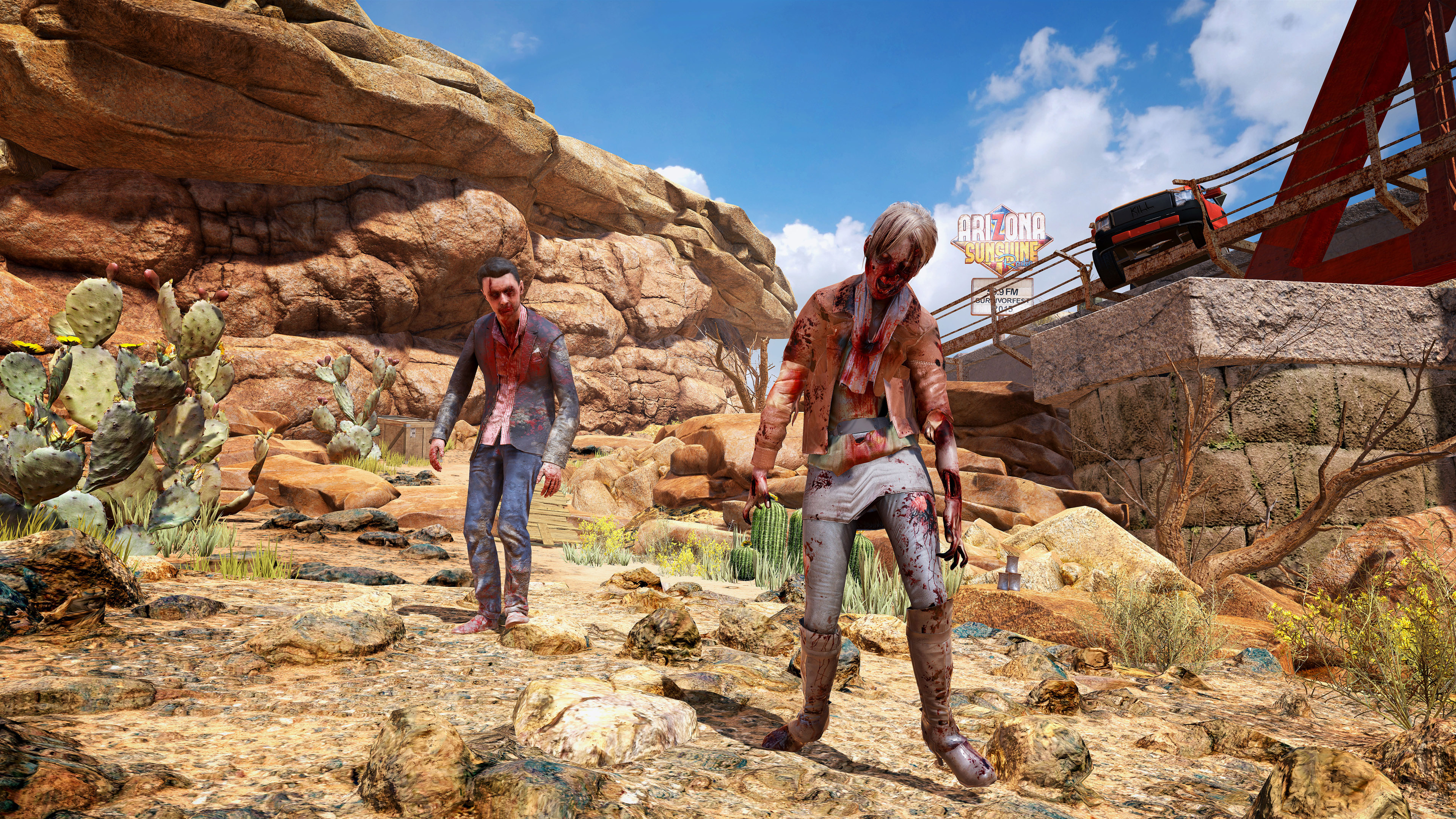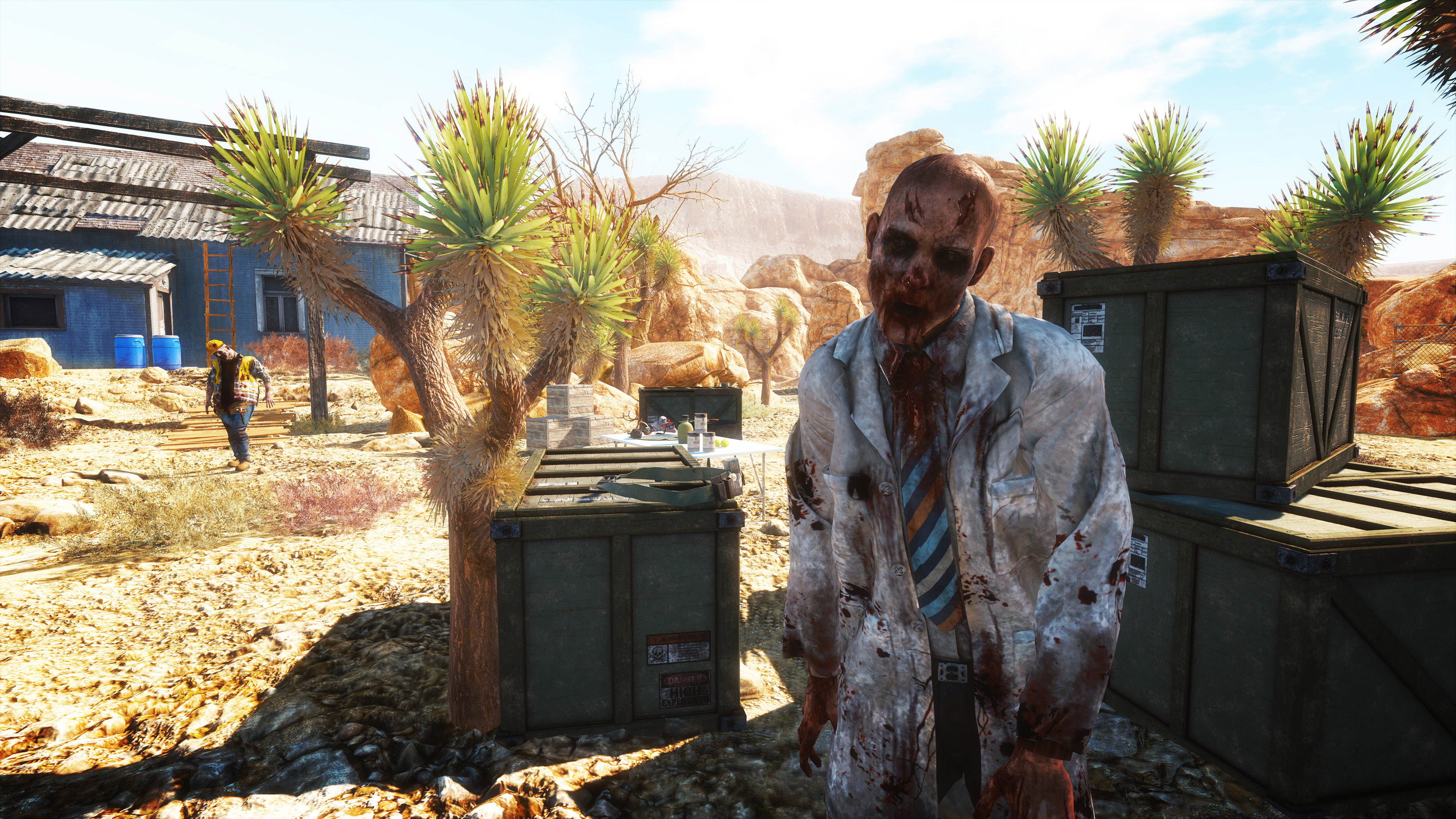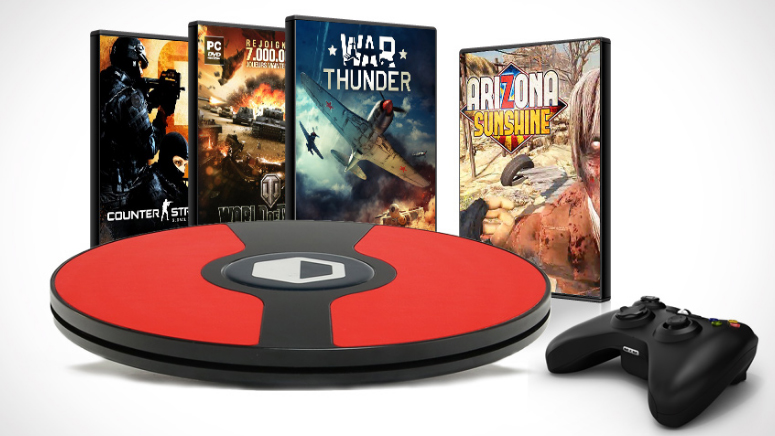Arizona Sunshine is one of the best VR games you’ve never heard of
A breath of fresh air for an increasingly stale genre

For the uninitiated, Arizona Sunshine is a game on Oculus Rift and HTC Vive that thrusts players into the zombie apocalypse and forces them to survive while they travel across the wilderness of Arizona.
In the campaign, you trek through the deserts and canyons of the arid landscape, fighting your way through the various dimly lit mines and other environments packed with zombies.
The narrative is told through voice overs, as the main character finds other survivors and tries to survive in the harsh landscape, all while zombies are nipping at his heels. Despite the gloomy premise, it's a story that doesn't quite take itself seriously, with the hero throwing out some one-liners after kills – yet it manages to keep things pretty tense throughout.
That tough-to-achieve balance – alongside some neat innovations – is what makes Arizona Sunshine a breath of fresh air in the increasingly stale genre of first-person shooters in VR.
Arizona Sunshine a breath of fresh air in the increasingly stale genre of first-person shooters in VR
At GDC this year, there were close to a half-dozen of these titles, all made by prestigious studios, all floating around the convention center. Keeping them separate became a job in and of itself, but Arizona Sunshine was the one that shone brighter than them all.
While other games go about trying to reinvent the wheel when implementing FPS combat in VR, and in the process over-complicating it and making their titles a chore to play in VR, Arizona Sunshine sticks with a tried and true set up, focusing on ease of use and simplicity in its gameplay ... which is very much appreciated, especially when wearing a VR headset and having so much blood and guts hurled at you.
Breathing life into the genre
Vertigo Games, the studio that makes Arizona Sunshine, are no strangers to working on VR titles. Back in 2014, they launched the incredibly serene World of Diving. While fully playable without a VR headset, playing it with one is a wholly immersive experience as you dive and explore the ocean, photographing marine life and searching undersea shipwrecks.
Sign up for breaking news, reviews, opinion, top tech deals, and more.
After that, they tooled around with Skyworld, a 'tabletop' strategy game where you capture several points on the map while building your empire and, along with that concept, they built Arizona Sunshine.

While Arizona Sunshine’s concept is a dime a dozen nowadays for entertainment in general, the execution is rock solid, and offers some of the most satisfying action for a VR game. It does this in a few ways. First, it presents it in a way that's exciting and also feels surprisingly tense – the mines are dark, and you have to utilize a flashlight to keep track of your surroundings. Second, unlike other VR titles that are released in Early Access, the developers chose to launch Arizona Sunshine as a full game and gradually release updates based on feedback from players and new gameplay modes for the core game.
During my play session, I got to experience the new horde mode map set in the Mines, which is playable online and locally for up to four players. As is the case for most horde modes in other titles, you'll have to fight waves of enemies and last as long as possible. But what made this horde mode special is that there’s an increased focused on movement and verticality.
For the most part, many VR levels are fairly flat and don’t really offer much in exploring multi-floor areas. The increased movement with the new locomotion system offers players more of a chance to evade the overwhelming zombies hordes, which makes this side mode surprisingly creepy and unnerving.

Staying up to date with Arizona Sunshine
As one of the few VR games to not have been released in Early Access, the developers have to be more mindful of consumer feedback. After the launch of Arizona Sunshine in late 2016, the team at Vertigo Games have been steadily releasing new updates and hotfixes to improve the overall experience.
"The full launch we did was in December, we didn't go early access like other VR titles," said Director of Business Development John Coleman. It's less about having features that wildly change the game, like you'd see in other Early Access titles, but more so giving players more stuff to do with the existing playstyles".
Moreover, the developers are open to allowing new peripherals and devices to work in conjunction with their titles. For instance, the 3D Rudder device, which gives players a physical pad to control movement in VR games, works with the expanded locomotion updates from Vertigo Games.

Coleman went on to add that this is a part of Vertigo’s vision for developing games, always being mindful of the player’s experiences. “In general, our philosophy is to give players options and 3D Rudder provides another option in terms of locomotion and control scheme,” Coleman said. “We are still evaluating how players are using locomotion in general and how they interact with peripherals like 3D Rudder as we think about designing future content.”
It'll certainly be interesting to see where things go from here. Usually in the case of early VR titles, there's a lot to keep track of when it comes to feedback and expectations from the audience. These early titles for the building VR market are the ones that keep people playing, and with continued support for these titles, the developers aim to have their players coming back for more.
Arizona Sunshine is out now on Steam, and playable on Oculus Rift and HTC Vive